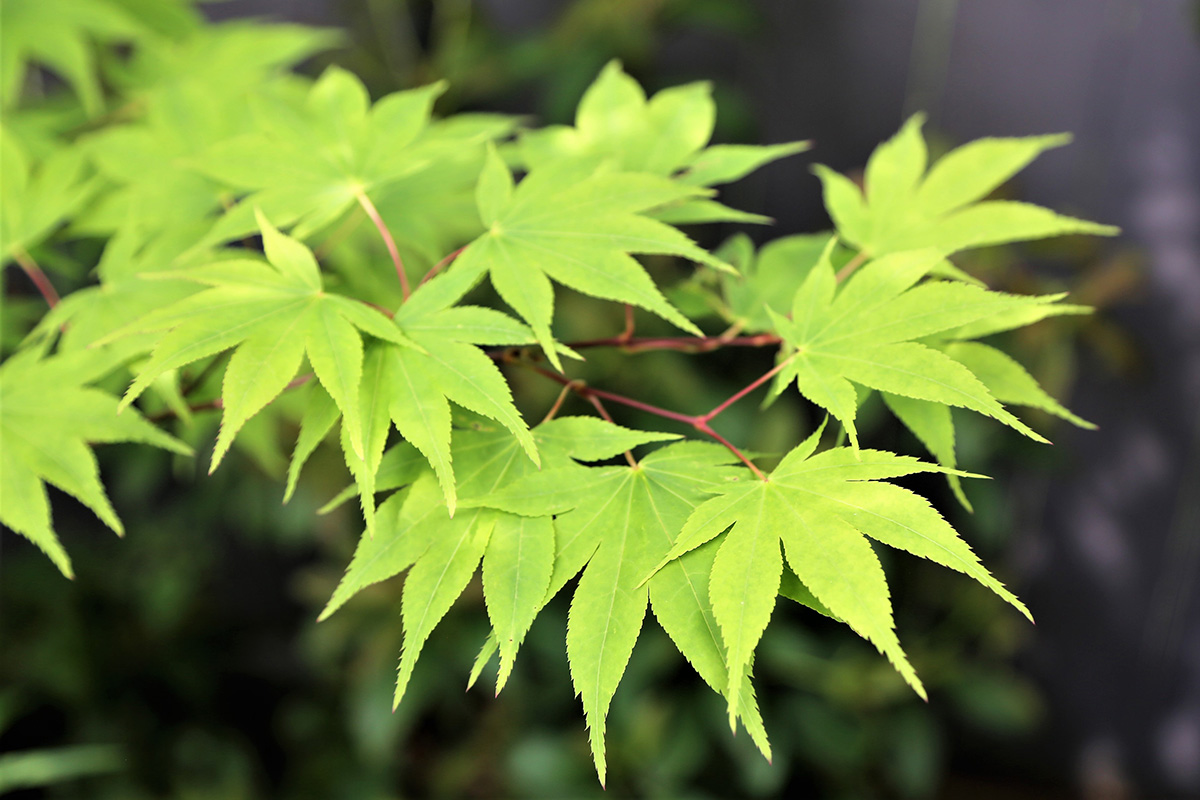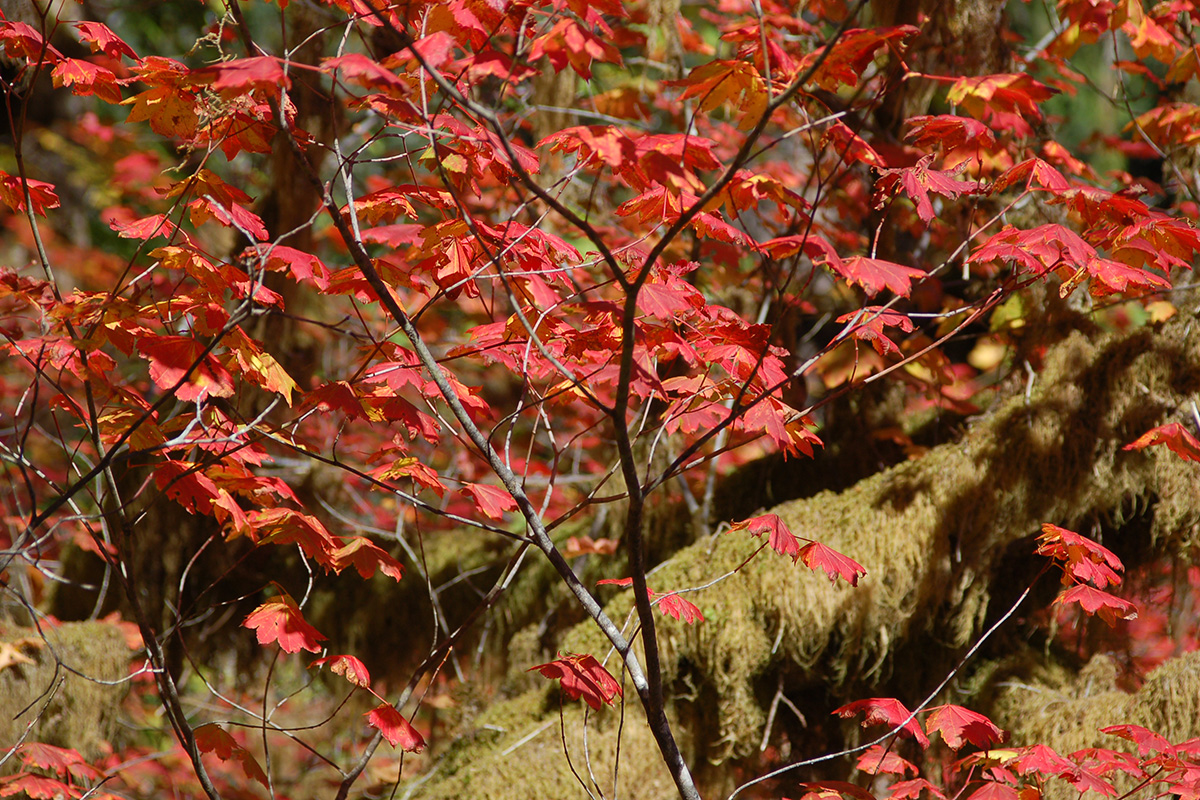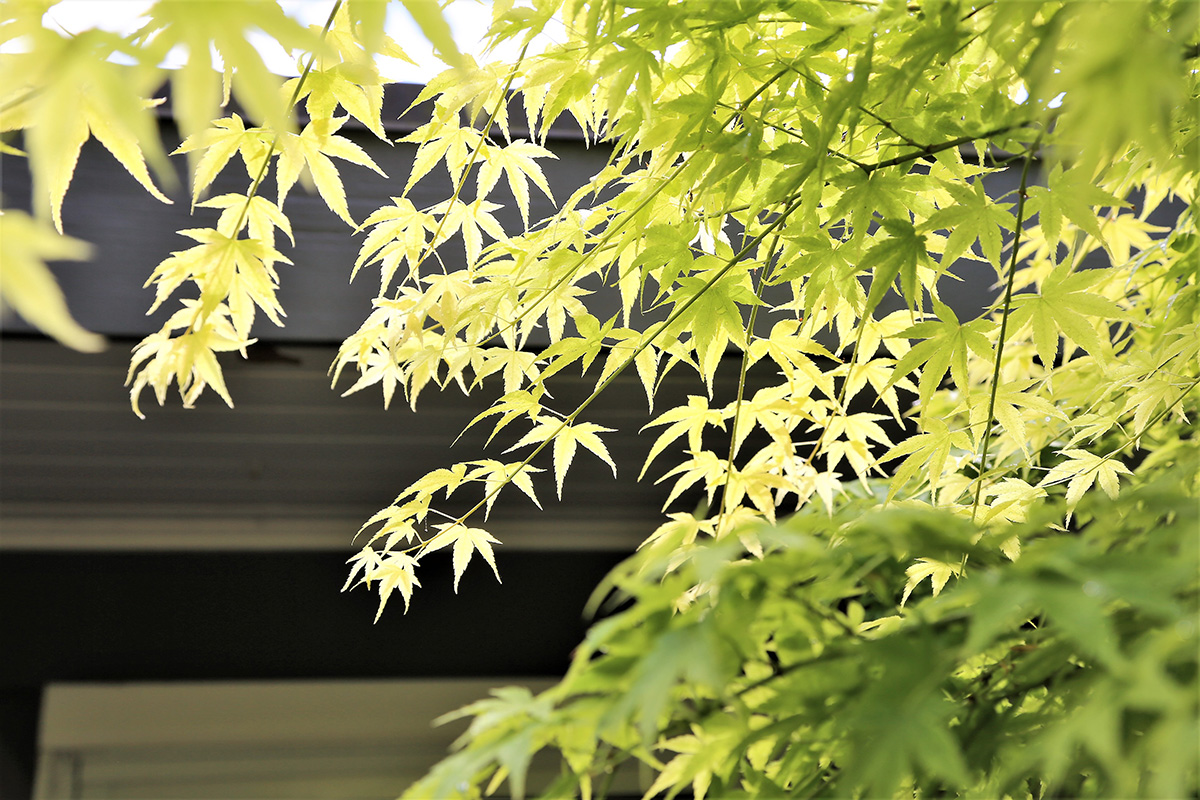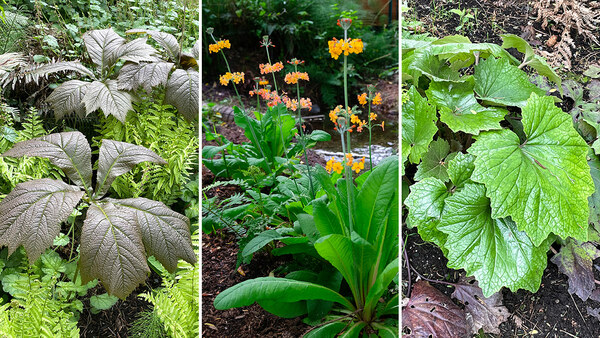
City gardens are often smaller and have less space for larger specimen trees. These gardens also have more design constraints, such as lower-light conditions, less availability of space between buildings, or less physical access to the garden space. All these situations can be design challenges. But don’t worry; there are some excellent trees available for small spaces. The three trees described below look wonderful as single specimens to create a lovely focal point. They also work in multiples, as space allows, to help unify the garden.

‘Osakazuki’ Japanese maple
One of my all-time favorite trees is ‘Osakazuki’ Japanese maple (Acer palmatum ‘Osakazuki’, Zones 5–9). This tree has everything going for it. It creates a wonderful canopy to sit under and can be used singly or in multiples to create a small woodland garden underneath its canopy. This tree will quickly grow 15 to 18 feet tall and wide, maturing to around 20 to 25 feet tall and wide. ‘Osakazuki’ is beautiful all year long. In early spring the new unfurling leaves are cheery bright orangey-green. They look like miniature folded paper fans. Once they open, they are bright and rather luminous, letting light sift through the leaves. This effect creates a beautiful dappling light throughout the season. In late spring the little whirlybirds, or samara as they are botanically known, turn a lovely bright red and hang from the tree branches. The samaras are the same color as the lovely fall foliage and provide a gentle reminder in spring of the lovely fall color to come. As the season turns to fall, the foliage is a striking red-orange color that will also last on the tree for a few weeks before dropping and decorating your garden or patio floor.
‘Osakazuki’ Japanese maples, like most Japanese maples, prefer dappled partial-shade conditions to perform and look their best. East, north, and understory areas are great locations for placement. (They excel as understory plants.) It’s best to avoid full-sun locations, but if they are in that situation, they require consistent moisture to avoid sunscald and burning of leaves. They prefer acidic soil with plenty of organic matter.

Vine maple
Vine maple (Acer circinatum, Zones 5–9) is great for use in a small garden. Since this is a native tree, it can handle low-light situations typical of a forest understory and is great in a garden or patio near a tall building. Typically growing 20 feet tall and wide, this tree could qualify as either a very large shrub or a small tree. Vine maples are available as both single-stem and multi-stem trees. Using multiples of the multi-stemmed variety would be great for creating a private woodland space. In winter, the newest growth from the previous year is bright red. If you really enjoy the red stems, there is a cultivar known as ‘Pacific Fire’ that has even redder stems that contrast nicely with the yellow leaves year-round. Vine maples have small but wonderfully bright red flowers with yellow stamens, which makes a beautiful combination. The pollen- and nectar-rich flowers provide an early food source to native bees and other pollinators active in early spring. In the late spring and into summer, the leaves help create a cool and relaxing canopy to visually enjoy or sit near or underneath. In fall, the leaves turn a bright yellow in low-light situations. When exposed to more light during the growing season, they display more fall color of oranges and reds. A great cultivar with deeply cut leaf forms is called ‘Monroe’. This is an equally wonderful specimen tree.
Vine maple is a typical understory plant; as a bonus, it is very adaptable. This maple will take a variety of light conditions in rich acidic soil with plenty of organic matter. Although best situated in partial sun, shade, and even deep shade, this tree works well in full sun if it is watered consistently during our long dry summers.

‘Shivada Gold’ Japanese maple
Often the garden space or patio is quite small and only has room for a containerized tree. There are many small-scale Japanese maples that would live a long time in a large container. One tree that I really enjoy is ‘Shivada Gold’ Japanese maple (Acer palmatum ‘Shivada Gold’, Zones 5–9). This cultivar grows only 10 feet tall and 5 to 6 feet wide, making it perfectly situated for a container. The great thing about a containerized tree is that you get more height to the tree and more floor space for other containers or a seating area. This tree really glows with bright yellow leaves and stems. It is a very bright tree even in winter. Like ‘Osakazuki’, the leaves of ‘Shivada Gold’ let even the smallest amount of light filter through to the patio or garden floor. The foliage changes colors in the fall from bright yellow to pale yellow, a subtle but definitely noticeable change. One maintenance bonus for this tiny-leaved tree is that the leaves decompose quickly. They can be recycled as mulch in the container or garden bed. I have a pair ‘Shivada Gold’ growing on my north-facing patio that are a delight to look at throughout the season. Their bright stems in winter glow when the dark gray winter skies are upon us here in Seattle.
‘Shivada Gold’ Japanese maple would like the same conditions as ‘Osakazuki’; east, north, and understory areas are great locations for placement. I would avoid full-sun locations for this particular tree, since the leaf color is very light green and is prone to sunscald and bleaching out. It prefers acidic soil with plenty of organic matter. If planted in a container, it will dry out more quickly than if planted in the ground. So make sure to keep it well watered.
I hope you try a tree in your city garden or near your patio area. An added benefit of using deciduous trees in tight situations is that there is an ability to add early blooming plants and bulbs for spring color and interest underneath before the canopy opens and creates a shady relaxing spot. These maple trees are great focal points, as they create year-round structural elements in your garden for you to enjoy up close or from a window or patio door. They provide a wonderful grounding element to any space and attract birds and insects that are needed in all of our gardens.
—Jason Jorgensen is a landscape designer in Seattle.
Fine Gardening Recommended Products

DeWalt Variable-Speed Cordless Reciprocating Saw
Fine Gardening receives a commission for items purchased through links on this site, including Amazon Associates and other affiliate advertising programs.
- 18.31 x 6.13 x 4 inches
- 1-1/8-inch stroke length
- Variable speed trigger with 0-3000 spm

The Nature of Oaks: The Rich Ecology of Our Most Essential Native Trees
Fine Gardening receives a commission for items purchased through links on this site, including Amazon Associates and other affiliate advertising programs.

DeWalt Variable-Speed Cordless Reciprocating Saw with 6-Piece Saw Blade Set
Fine Gardening receives a commission for items purchased through links on this site, including Amazon Associates and other affiliate advertising programs.
- 18.31 x 6.13 x 4 inches
- 1-1/8-inch stroke length
- Variable speed trigger with 0-3000 spm
- DW4856 Metal/Woodcutting Reciprocating Saw Blade Set, 6-Piece



















Comments
Nice article Jason.
Log in or create an account to post a comment.
Sign up Log in